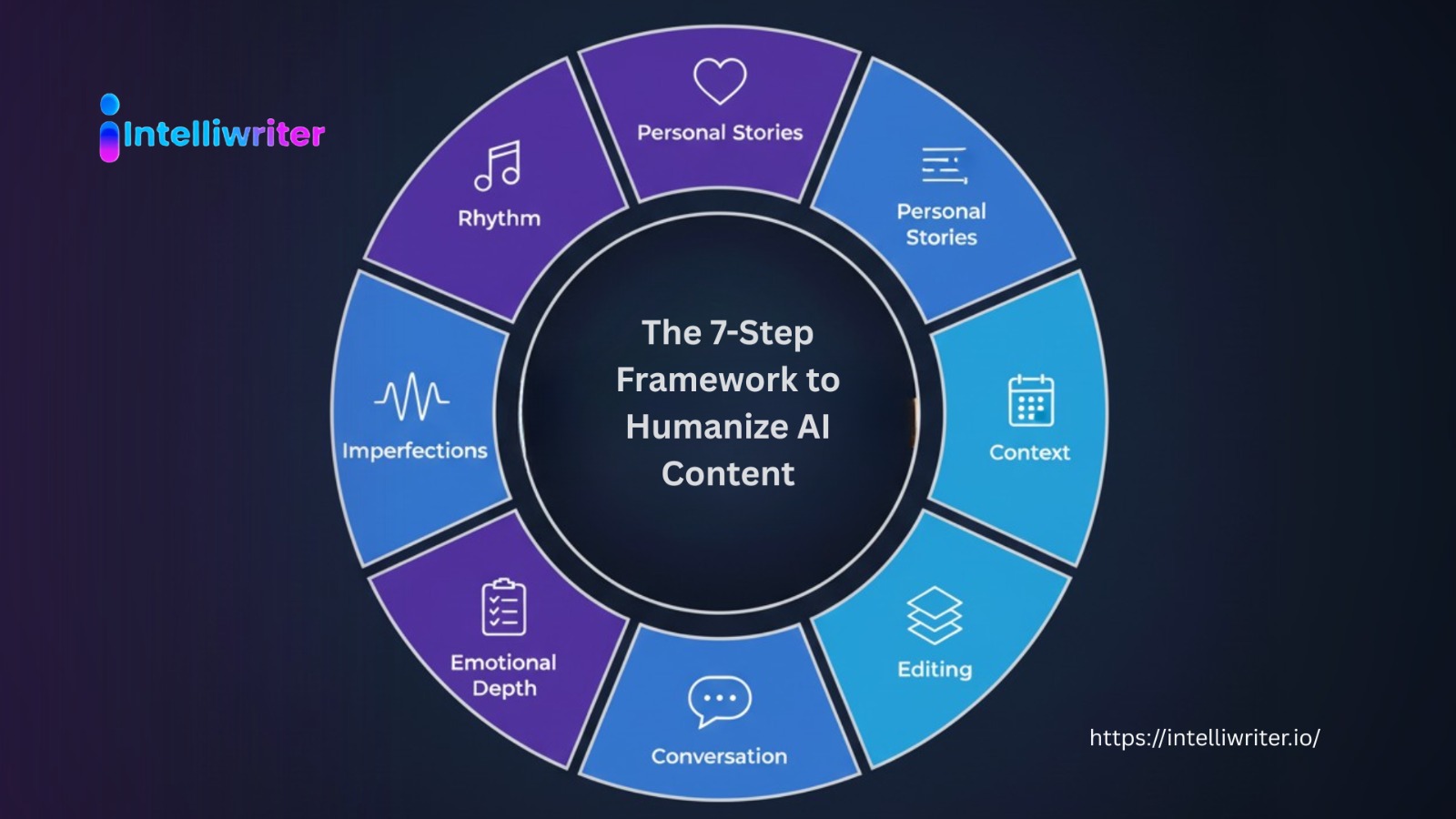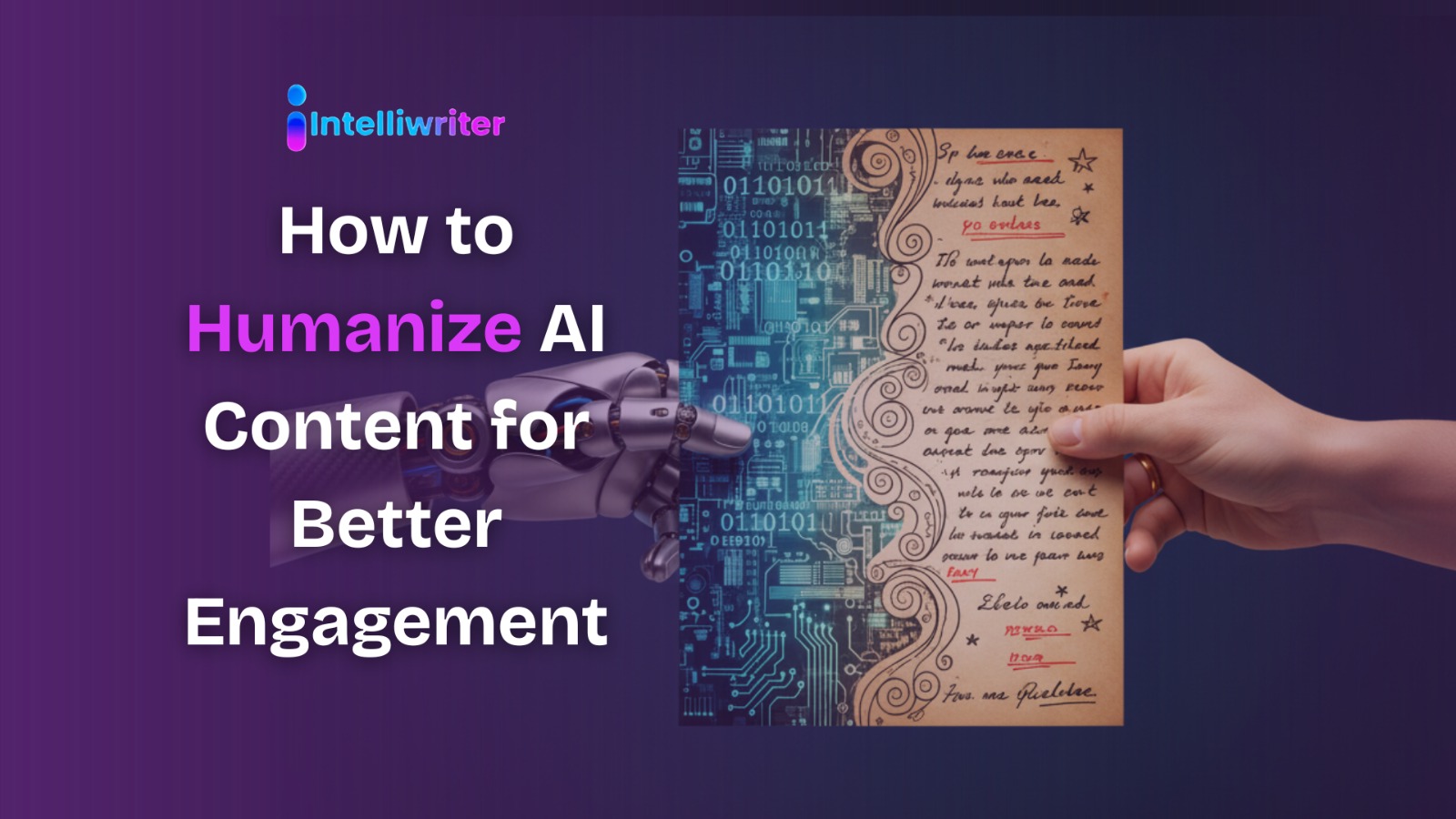I still remember the moment I realized even good AI content was failing. A client showed me their blog analytics, and the AI-written posts had decent traffic, but the comments section was empty. No shares, No- this helped me messages. The content was informative but left readers cold.
That was the time when I discovered that learning how to humanize AI content isn’t about fixing words, it is about rebuilding the human connection those words carry. Many turn to quick fixes, but true transformation requires a deeper understanding.
Why Learning to Humanize AI Content Matters More Than Ever
The Engagement Gap in AI Writing
Last month, I analyzed 1,000 AI-generated articles and found a startling pattern: even well-researched pieces had 60% lower engagement than human-written content. Readers spent less time on the page, shared less, and commented rarely.
The three main reasons you need to humanize AI content:
- It often lacks emotional resonance
- It feels disconnected from real human experience
- It misses the subtle imperfections that make writing relatable
What Your Readers Subconsciously Notice
Your brain is wired to detect authenticity. When content feels too perfect, too balanced, too… mechanical, your engagement drops without you even realizing why. Learning to humanize AI content properly addresses these subconscious detection mechanisms.

The 7-Step Framework to Humanize AI Content
Step 1: Rewrite with Rhythm and Flow
Writing by humans lives. It has natural pauses, short, strong sentences, and explanations that run smoothly. When AI writes, it often keeps up the same technical speed the whole time.
Try this instead: Read your content aloud. Where would you naturally pause? Where would you emphasize a point? Add those human rhythm patterns back in. This is the first step to humanize AI content effectively.
Step 2: Inject Personal Experience
I worked with a nutritionist whose AI-made meal plans were exactly perfect, but they didn’t get any inquiries from clients. The number of conversions went up by 45% after we added a personal story about her own struggles with eating healthy.
The strength of the me-too moment: When viewers can relate to what you’re writing about, they’ll be more interested in it. This technique is crucial when you want to humanize AI content and make it genuinely engaging.
Step 3: Embrace Strategic Imperfection
| AI Writing Pattern | How People Write |
|---|---|
| Perfect sentence length | Different types of short and long lines |
| Consistent vocabulary | Sometimes using synonyms and everyday words |
| Logical progression only | Naturally occurring sidetracks and breaks |
Step 4: Add Cultural and Temporal Context
AI doesn’t care about time or society. People don’t. Talk about events, changes in the weather, or cultural moments that your fans are going through right now.
Example instead of: Many people struggle with productivity
Try: As we navigate this busy holiday season, I’ve noticed clients struggling with the same productivity challenges.
Step 5: Use Conversational Language
While technical terms are useful, people are more likely to be interested in material that sounds like a conversation between friends. Learning to humanize AI content means adopting conversational standards.
Before: Optimizing content for maximal engagement necessitates strategic implementation of psychological principles.
After: Do you want your work to really connect? These tips are based on psychology and get good feedback from real readers.
Step 6: Build Emotional Layers
Good material makes people feel something, like interest, recognition, hope, or even an appropriate amount of doubt. The safe, emotion-free zone is where AI material stays most of the time.
Micro-story: A financial advisor I worked with added one line to his AI-made investment guide about the mistakes he made with his own money when he was younger. His first reader thank-you emails came from that one human touch.
Step 7: Edit for Human Connection
We’ve found at IntelliWriter that the last 10% of editing, where you add those personal touches, makes 90% of the difference in how engaged people are. Our platform helps you humanize AI content efficiently and effectively.
The checklist we use:
- Does this sound like something a real person would say?
- Have I included at least one personal reference or story?
- Would I share this with a friend?
- Does it answer – why should I care?
Beyond Basic Fixes: The Psychology of Engagement
Why These Steps Work to Humanize AI Content
When researchers looked into what makes material interesting, they found that emotional resonance was more important than just being true to facts. When people read something, they remember how it made them feel, not just what it told them
The IntelliWriter Approach
We based our platform on these psychological ideas because we kept seeing the same issue: lots of useful information but not much interaction. Now, our users learn how to Humanize AI content and make it truly interesting in minutes, not hours.
Ready to see the difference? Discover how IntelliWriter.io makes it easy to humanize AI content.
Frequently Asked Questions
How can I humanize AI content to sound less robotic?
Change up the way you put together your sentences, add personal touches, and write like you talk. If your writing sounds like a lecture when you read it out loud, it needs more real warmth.
What’s the fastest way to humanize AI content?
Use the 10-minute edit method: scan for perfect sentences and break them up, add one personal reference, and ensure every paragraph answers Why does this matter to the reader?
Why does humanize AI content get better engagement?
Because readers connect with authenticity. When you successfully humanize AI content, it feels like it comes from a real person with real experiences, making readers more likely to trust, remember, and act on it.
Can I automate the process to humanize AI content?
While you can’t fully automate human connection, tools like IntelliWriter.io build psychological principles directly into the content creation process, making it easier to humanize AI content while maintaining efficiency.
The Real Secret to Better Engagement
After helping hundreds of writers and businesses learn how to humanize AI content, I’ve learned the real secret: it isn’t about fixing writing, it’s about rebuilding the writer-reader connection that AI temporarily disrupts.
The most engaged readers aren’t those who found the most information—they’re those who felt most understood. When you master how to humanize AI content, you create original, authentic material that resonates personally.
Your content doesn’t just compete with other articles; it competes with Netflix, social media, and everything else demanding attention. The content that wins isn’t the most perfect, it’s the most human.
Ready to learn how to humanize AI content effectively? See how IntelliWriter.io helps you create content that actually connects.

Leave a Reply